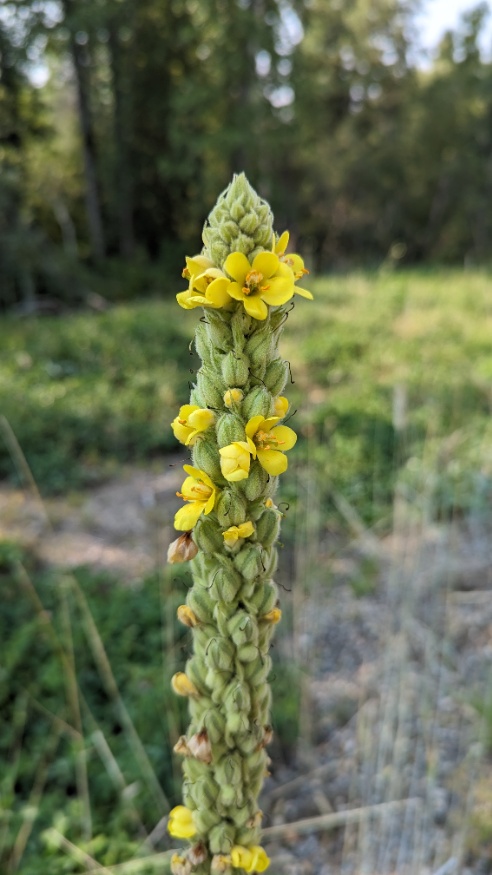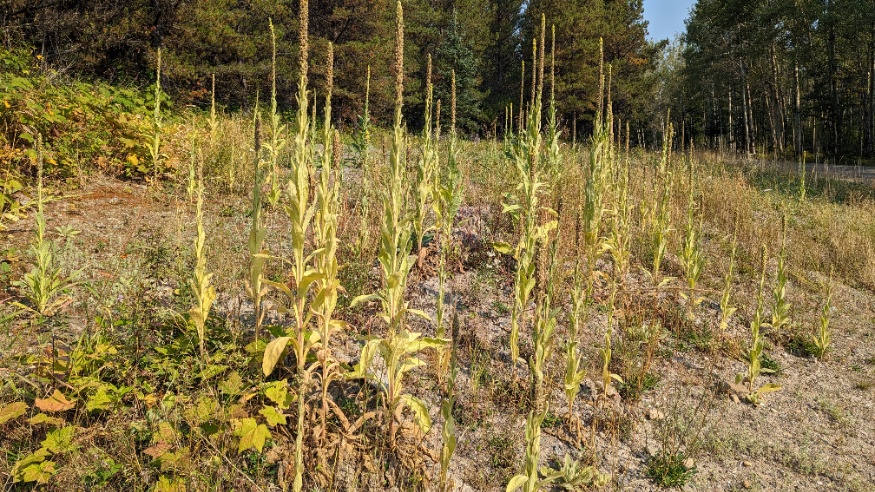Medicinal Mullein

Let's talk about mullein, also known as, lungwart, candlewick plant, Aron's rod, or wolly mullein. This prominent and very easy to identify plant can be found all over the world, mainly in dry, sandy, and disturbed areas. You May notice it on Roadsides, in abandoned lots, or forest edge, solitary, or in scattered colonies . Though native to Europe, Asia, and northern Africa, mullein has become so plentiful its now naturalized here in North America.

It was introduced into North America for medicinal use and as a fish poison (piscicide). Often thought as a noxious weed though it's not too invasive and is occasionally grown as an ornamental. This plant has a long history of medicinal use as it was used in Ancient times in Europe, traditional Chinese medicine, and is still widely used today.
@naturewithus_ Medicinal Mullein #herbalmedicine #tuberculosis #naturalcoughremedy ? Will to Live - Jacob Yoffee
Identification
A Basal rosette of large fuzzy leaves appear in its first year of growth. Think of the resemblance to cilia hairs linning the lungs; it can help you remember the use of this plant. In the second year of growth mullein shoots up a flower stalk roughly 7ft tall. A Raceme of yellow flowers appear from June to September, sowing up in a rather random fashion. Flowers then die, leaving a dead standing stalk. Seeds remain viable until the next soil disturbance, this can be for decades or even centuries!

Medicinal Actons
Mullein is well known for treating dry cough, pneumonia, and bronchial issues. Used as an expectorant, it helps expel mucus and soothes mucous membranes, moving toxins out of the lungs. This makes mullein a good choice for irritateing cough, congestion, asthma, and lung disease.
Mullein is also great externally as an oil or cream to treat joint issues, rheuma-tism, and sore muscles. Use on the skin for ear aches, eczema, rashes, splinters, and other skin conditions. The soft fuzzy leaves Can be even applied to babies as a diaper or used as toilet paper while in the wilderness.
Mullein has anti-viral and antibacterial properies that help fight both gram positive and *gram negative bacteria. These abilities have been used historically to treat tuberculosis, and positive results are causing physicians look to mullein once again for this purpose.
Besides what mullein is widely accepted for, there are other uses including:
- migraines
- constipation
- gout
- sleep
- diarrhea
- back spasms
- general health
Harvesting
Leaves, flowers, roots can be harvested anytime when the plant has not turned brown. Flowers can be eaten raw and have a slight sweetness; leaves can be chewed. The second year leaves are just as good. Just lay them out to dry or they also do well in a dehydrator. If air drying, it may need several days since leaves are thick. It helps to remove the midrib since it's thicker than the rest of the leaf.
Preparations
Plant parts can be used fresh or dried in a:
- tea
- tincture
- extract
- capsule
- poultice
Leaves or flowers can be infused in an oil for topical use on the skin or for ear aches. Dried leaves can be burned, smoked, and inhaled for respiratory ailments or blown into the ear for ear ailments. As such, dried mullein is very flammable, and the dead plant is a great tinder; in the past it would be wrapped in cloth and used as a torch.

One of its most popular preparations is as a tea: simply add 1 tablespoon of dried leaves or flowers to boiled water then steep for 10 minutes. Teas or tinctures can be taken three or four times a day. Fine leaf hairs dislodged in mullein tea may irritate some so running it through a coffee strainer may be necessary. Though great on it's own, mullein in combination with other herbs like licorice root is a great way to fight congestion during flu season.

Mullein is high in vitamins, minerals, and fatty acids. Other uses besides medicine is as a side in soups stews, or stir frys. Its benefitial constituents include:
- Flavonoids
- Antioxidants
- Betacarotine
- Carotanoids
Also high in:
- Potassium
- Magnesium
- iron
- Zink
- B5
- B2
Precautions
Generally a safe herb. Some people may react or have skin irritations from the fine wool on the leaves. Other minor side effects may include upset stomach or diarrhea. Try in small amounts at first to ensure you have no allergic reactions. Don't consume the seeds, they may be toxic. There isn't sufficient evidence against use for those with kidney or liver disease, pregnant or breastfeeding mothers, or those of ill health but it's always a good idea to avoid use or consult a health professional if these apply to you.